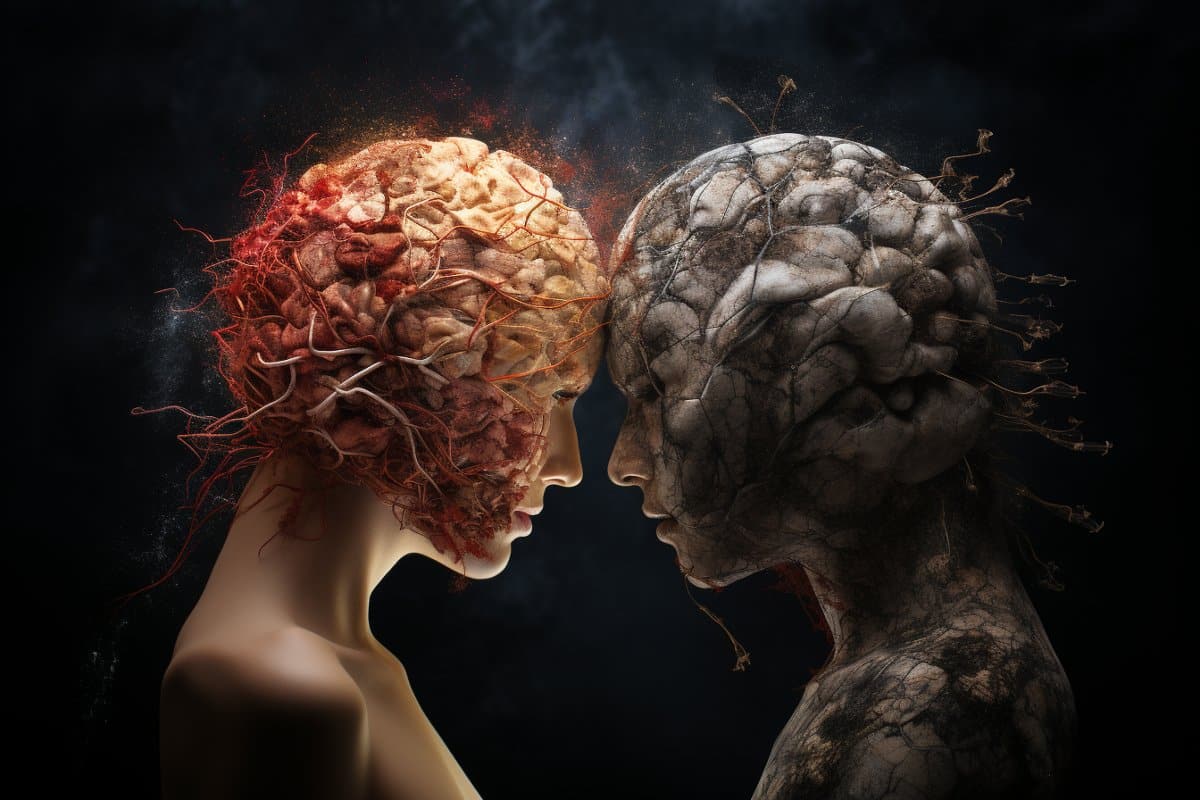The Invisible Wounds: How Domestic Violence Alters the Brain and Why Society Must Recognise It as Physical Harm

By Rose Byass
Domestic violence is often seen as a personal or social issue — one that evokes sympathy, yet remains largely misunderstood in terms of its biological consequences. While bruises fade and bones heal, the invisible wounds left by domestic abuse — particularly emotional and psychological — often remain unacknowledged by the medical and legal systems. Increasingly, neuroscience is revealing that all forms of abuse, whether physical, emotional, or psychological, result in lasting alterations in brain structure and function. These findings demand a seismic shift in how society perceives and responds to domestic violence: as a form of physical harm with long-term health consequences, not merely a "mental" or "private" issue.
The Science Behind Trauma: How Abuse Rewires the Brain
The human brain is remarkably plastic, capable of adapting to changing environments. But this adaptability has a downside: chronic trauma, such as that experienced in prolonged domestic violence, can rewire the brain in harmful ways. Neuroimaging studies have shown that survivors of domestic violence often experience measurable changes in key brain areas such as the amygdala, hippocampus, and prefrontal cortex — regions responsible for fear regulation, memory, and decision-making. One frequently cited study by Tomoda et al. (2009) used magnetic resonance imaging (MRI) to demonstrate that individuals exposed to emotional abuse during childhood had significantly reduced grey matter volume in the prefrontal cortex. Similarly, research by Choi et al. (2012) found that exposure to domestic violence can lead to heightened amygdala activity — the brain’s alarm system — which predisposes individuals to anxiety disorders and PTSD. The hippocampus, critical for memory consolidation, also suffers. A study by Bremner et al. (1997) showed that women with a history of childhood abuse had an 8% reduction in right hippocampal volume compared to controls. These structural changes are not minor — they translate into real-world difficulties in emotional regulation, memory, and cognitive processing.
Emotional and Psychological Abuse as Biological Harm
Society often draws a line between physical and emotional abuse — a division not grounded in neuroscience. The brain does not differentiate between a slap to the face and years of gaslighting or humiliation; in fact, chronic psychological abuse may have even more insidious effects over time. Emotional abuse is often characterised by unpredictability, isolation, and fear — all factors that lead to chronic activation of the body’s stress response system. Repeated activation of the hypothalamic-pituitary-adrenal (HPA) axis, the body’s central stress response system, leads to elevated cortisol levels — a hormone which, in high concentrations over long periods, is toxic to the brain. Elevated cortisol has been linked to the shrinkage of the hippocampus and prefrontal cortex (Lupien et al., 2009), further reinforcing the notion that abuse — even without physical violence — causes tangible, biological injury. In other words, the emotional and psychological torment often dismissed as "not that bad" or "just words" can cause brain damage comparable to that caused by physical violence.
Legal and Social Systems Are Lagging Behind the Science
Despite compelling scientific evidence, legal frameworks and social institutions still largely fail to treat emotional and psychological abuse with the seriousness it deserves. Courts frequently demand "proof" of harm — often equated with physical injury — while discounting the profound neurological and psychological damage victims endure. This creates an uphill battle for survivors seeking justice or protection, particularly when emotional abuse is involved. Moreover, workplace policies, healthcare systems, and even some mental health frameworks may inadvertently perpetuate this disconnect by minimising non-physical forms of violence. The result is systemic invalidation of survivors’ experiences and a failure to provide appropriate treatment, rehabilitation, and legal recourse.
Reframing Abuse: A Public Health and Human Rights Imperative
Understanding domestic violence through a neuroscientific lens demands a radical reframing: abuse in any form should be recognised not just as a moral or legal failure, but as a public health crisis with lifelong consequences. Brain injury, regardless of its origin, affects cognitive function, emotional wellbeing, and the capacity to lead a productive life. The impact is multi-generational, with studies showing that children raised in abusive households may exhibit similar neurological alterations, even if they are not the direct target of abuse. Public health campaigns must move beyond the bruises to highlight the hidden damage — the kind that lingers in neural circuits long after the relationship ends. Schools, workplaces, and healthcare providers should be educated about the biological consequences of abuse and trained to respond appropriately. Legal systems must be restructured to accept neuroscientific evidence as valid testimony of harm.
From Sympathy to Action
If society is to genuinely support survivors of domestic violence, we must stop categorising abuse into hierarchies of harm based on visibility. Neuroscience has unequivocally demonstrated that emotional and psychological abuse can be just as injurious — if not more — than physical violence. These findings carry profound implications for policy, healthcare, justice, and cultural awareness. It is time to elevate the voices of survivors and ground our responses in science, not sentiment. Every bruise, every threat, every demeaning word leaves a mark — sometimes on the skin, more often on the brain. And it’s high time we started treating both with equal seriousness.


